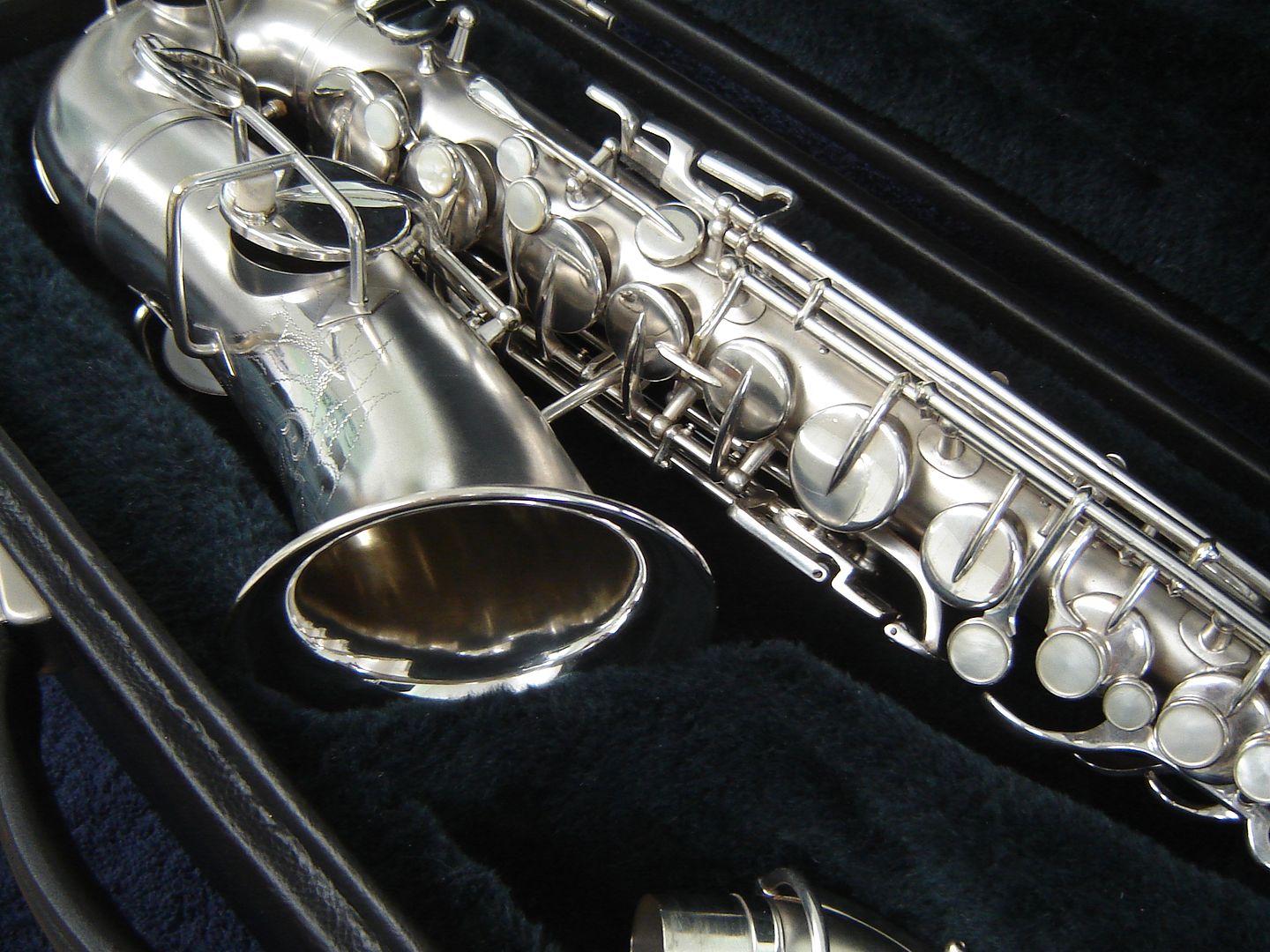In my case, the C* mouthpiece came from my first Selmer Mark VI alto, purchased new back in the early 1960's. Not a classic mouthpiece, but not of the modern era either.
I'm not one to accumulate large numbers of mouthpieces. I've got perhaps fifteen soprano clarinet mouthpieces (including two for German clarinets) to go with six soprano clarinets), about ten bass clarinet mouthpieces (to go with four bass clarinets), one Eb clarinet mouthpiece, one alto clarinet mouthpiece (a gift from Selmer, by the way), about ten baritone sax mouthpieces (to go with one horn), four alto sax mouthpieces (ditto), one (broken) soprano sax mouthpiece, a couple of stray tenor mouthpieces, one (very broken) bass sax mouthpiece, one single reed oboe mouthpiece, and one Runyon bassoon single reed mouthpiece.
All of these have trickled in over the past fifty years, and virtually none have been bought in search of a new "sound" - only the adoption of the metal (all Berg Larsen) sax mouthpieces fit this definition. I also tend to gravitate around the same style of reeds, having converted over to purple box Vandorens about twenty years ago.
I have modified mouthpieces here and there. Sawing off about a half inch of the barrel of the Berg Larsens was the only way that I could get them to play in tune with my current baritone, and I've had facings modified on soprano and bass clarinets mouthpieces as well.
I'm not one to accumulate large numbers of mouthpieces. I've got perhaps fifteen soprano clarinet mouthpieces (including two for German clarinets) to go with six soprano clarinets), about ten bass clarinet mouthpieces (to go with four bass clarinets), one Eb clarinet mouthpiece, one alto clarinet mouthpiece (a gift from Selmer, by the way), about ten baritone sax mouthpieces (to go with one horn), four alto sax mouthpieces (ditto), one (broken) soprano sax mouthpiece, a couple of stray tenor mouthpieces, one (very broken) bass sax mouthpiece, one single reed oboe mouthpiece, and one Runyon bassoon single reed mouthpiece.
All of these have trickled in over the past fifty years, and virtually none have been bought in search of a new "sound" - only the adoption of the metal (all Berg Larsen) sax mouthpieces fit this definition. I also tend to gravitate around the same style of reeds, having converted over to purple box Vandorens about twenty years ago.
I have modified mouthpieces here and there. Sawing off about a half inch of the barrel of the Berg Larsens was the only way that I could get them to play in tune with my current baritone, and I've had facings modified on soprano and bass clarinets mouthpieces as well.

